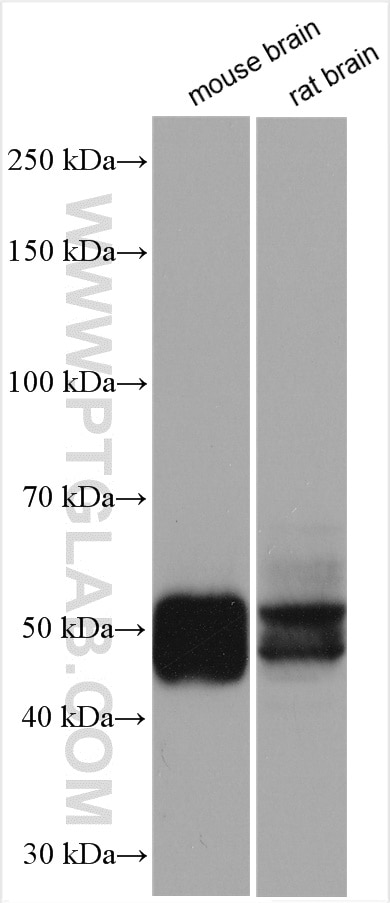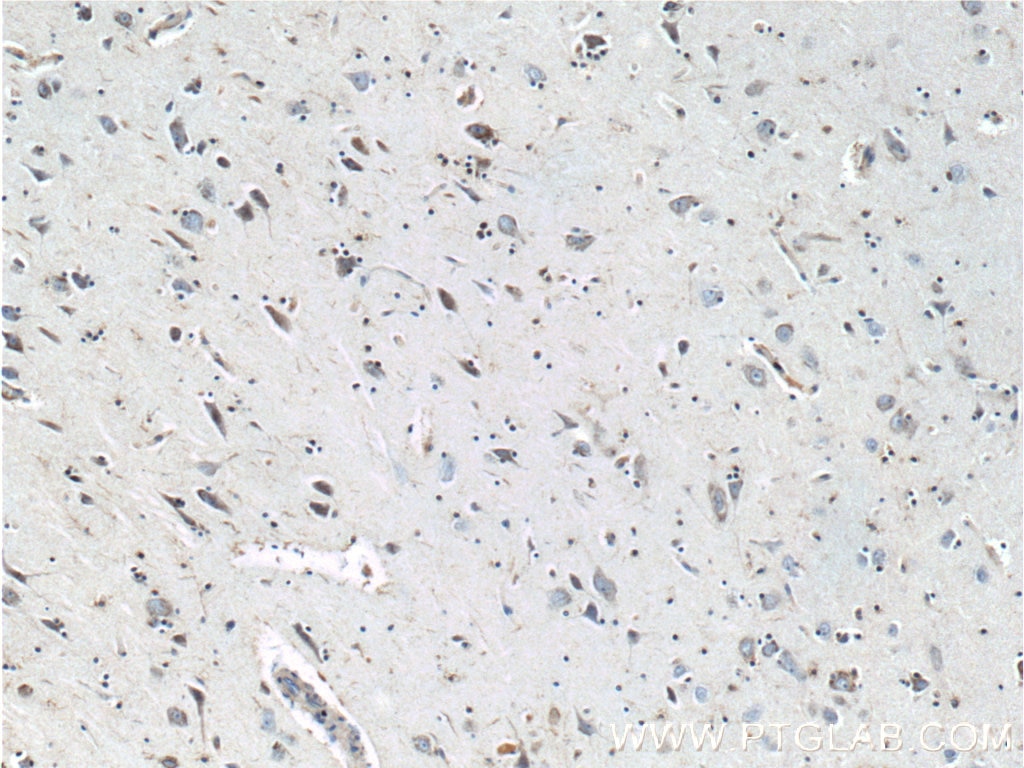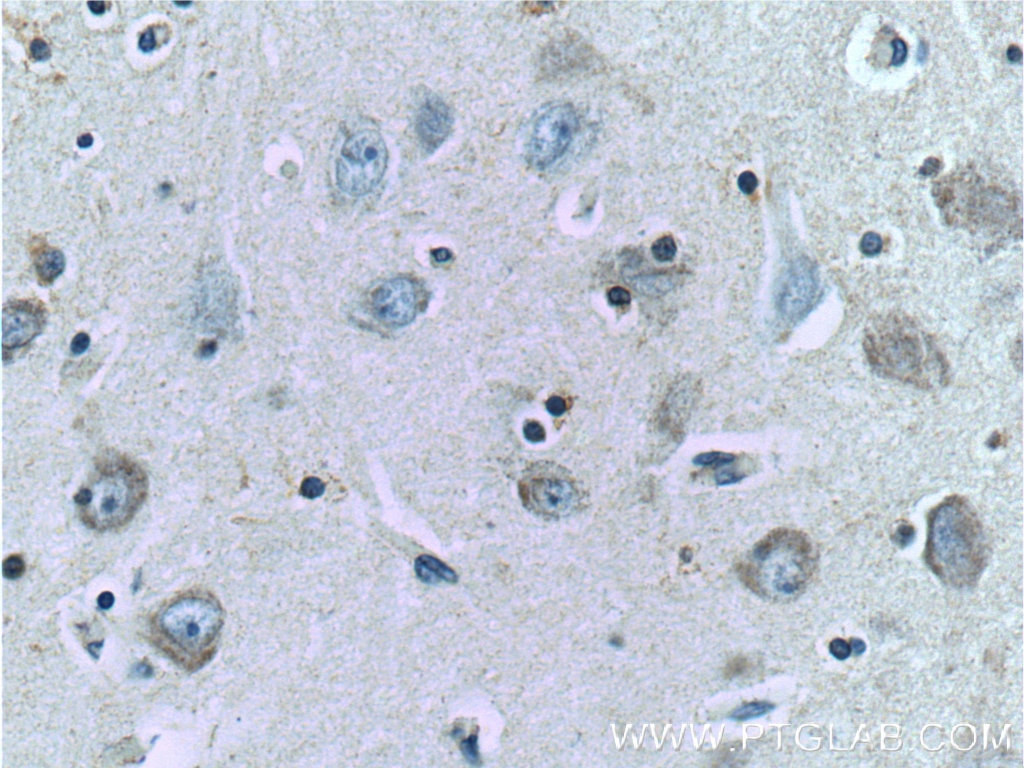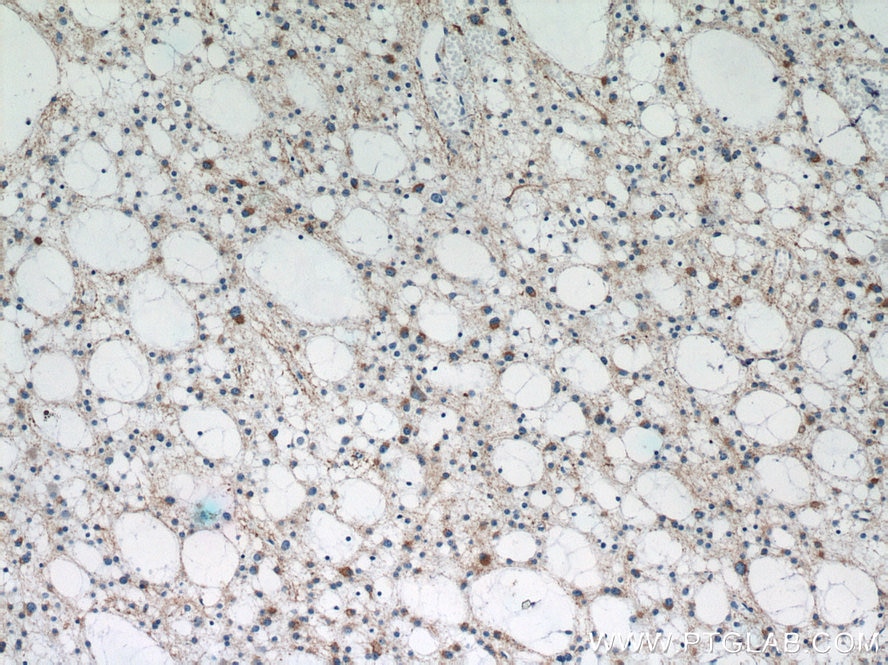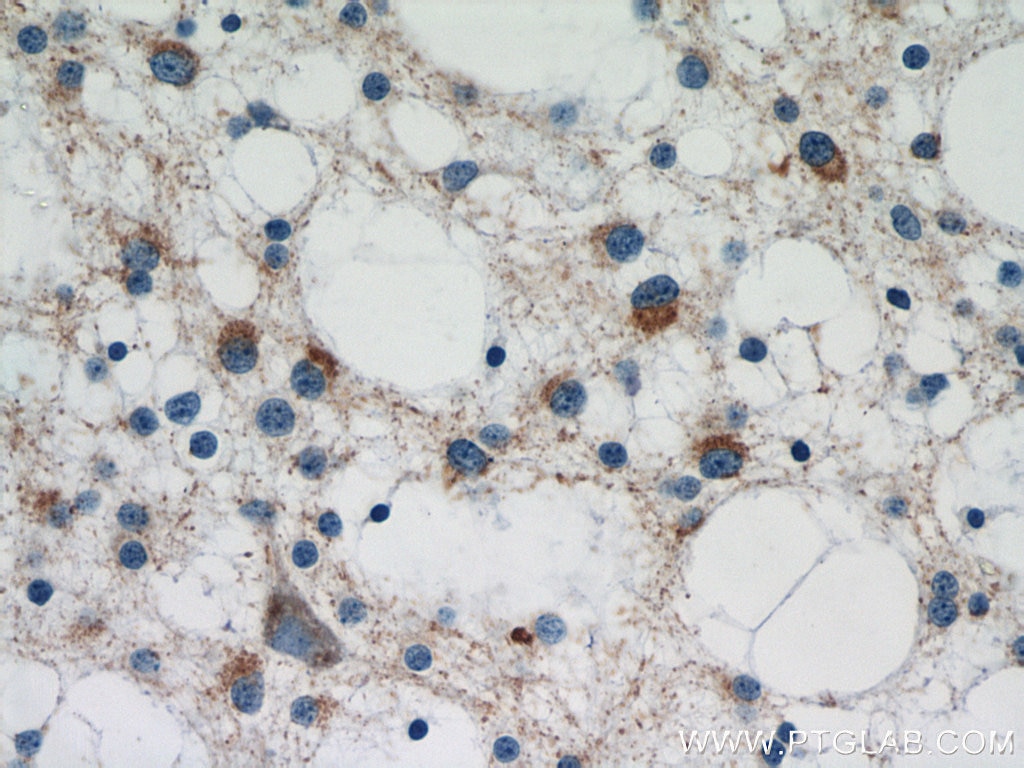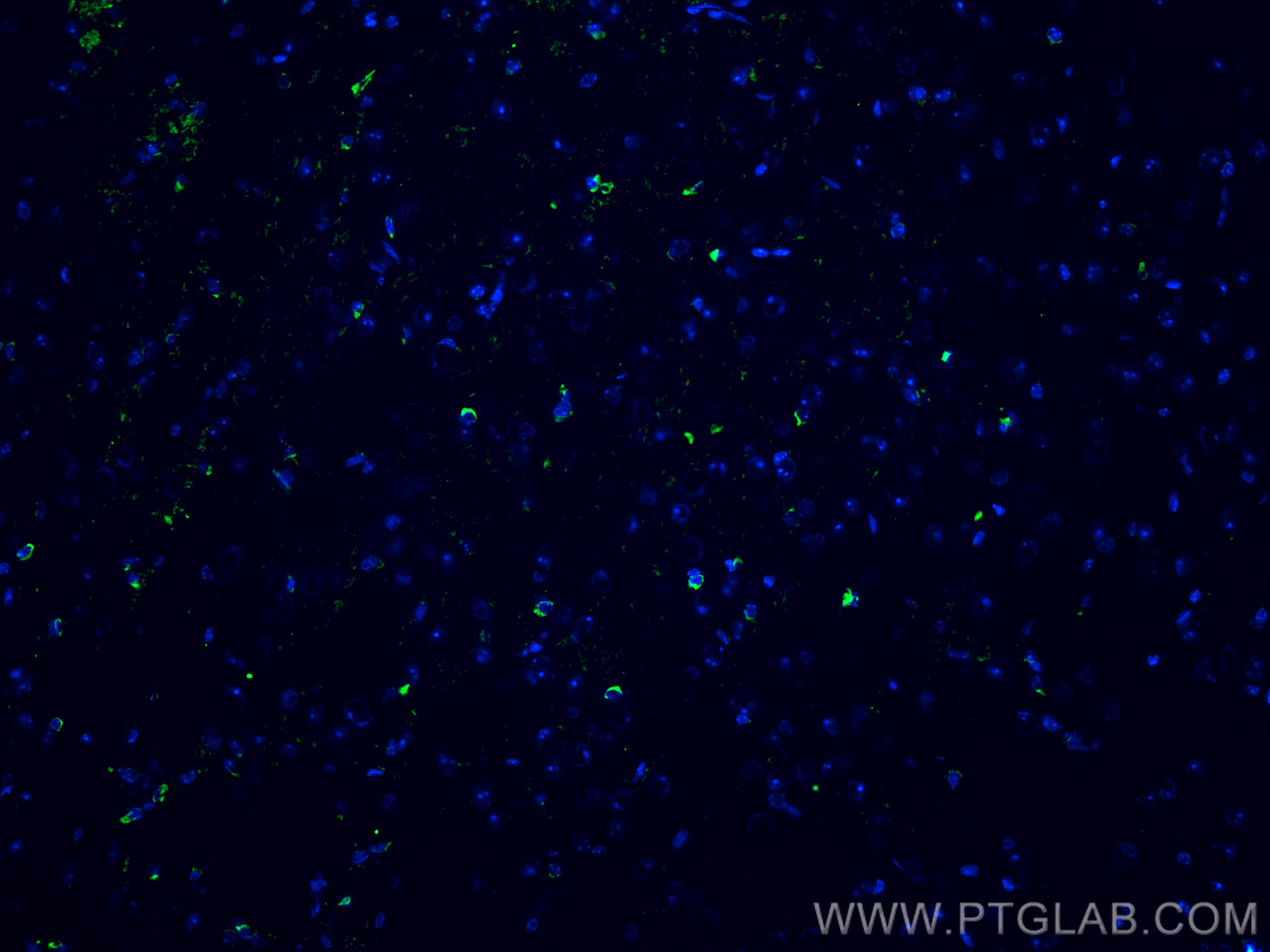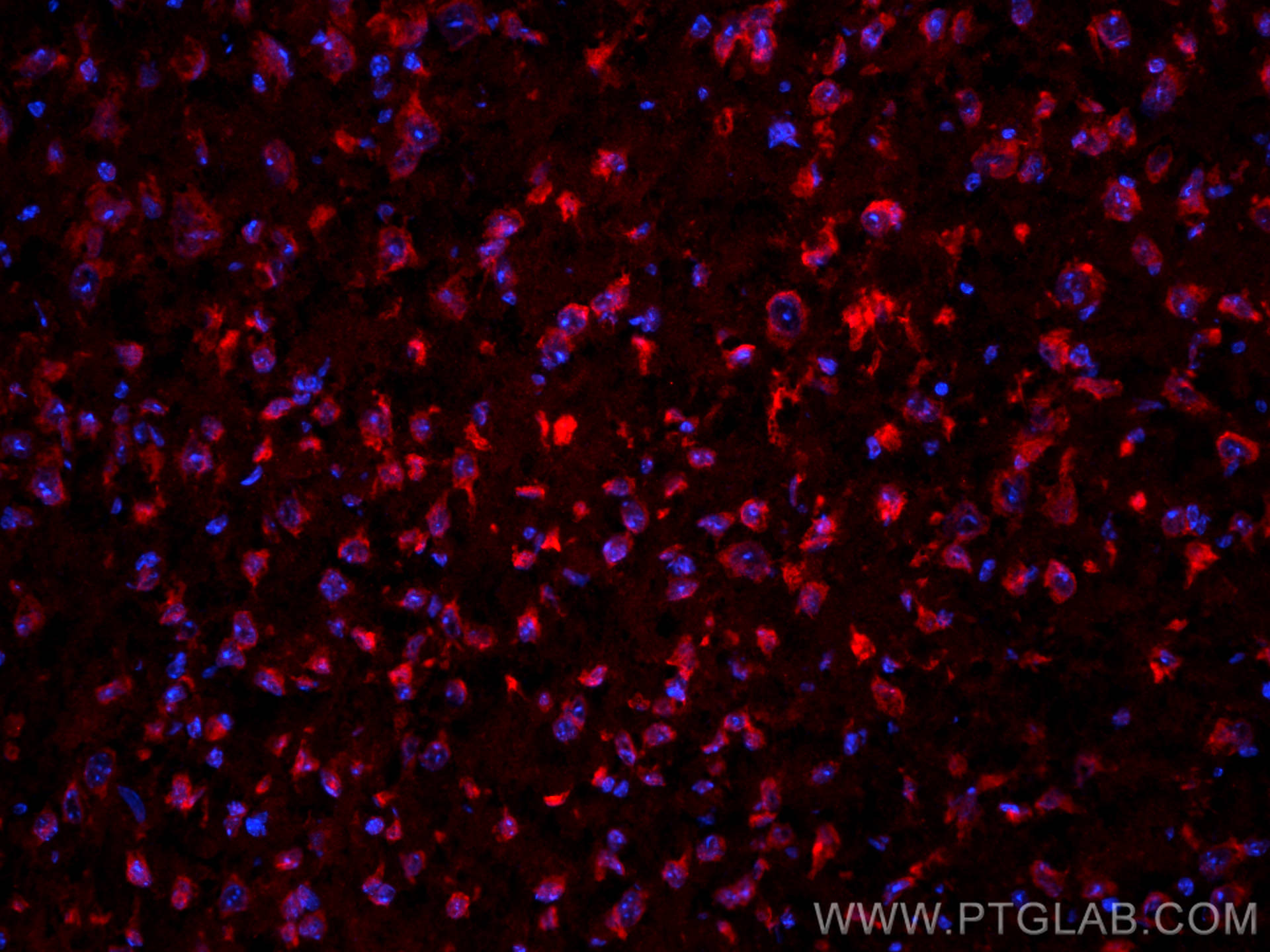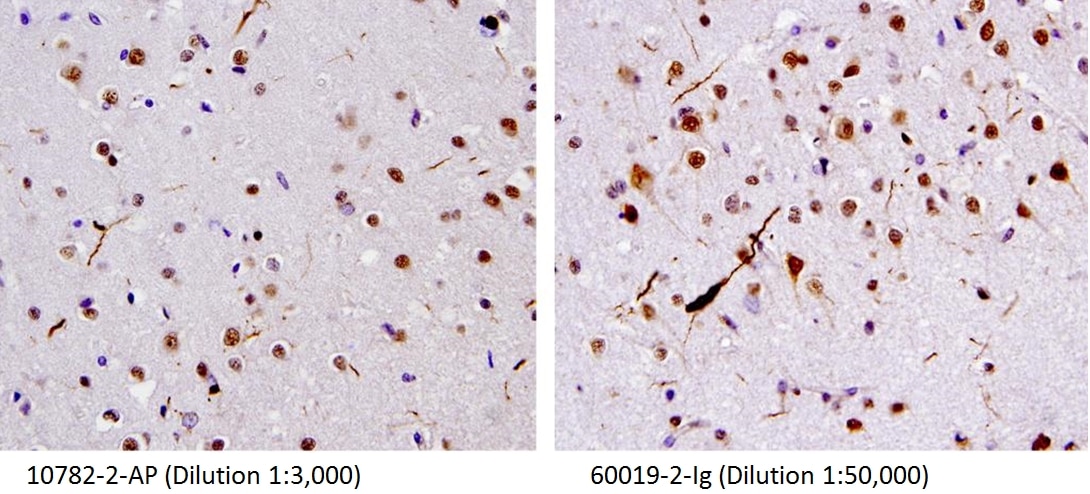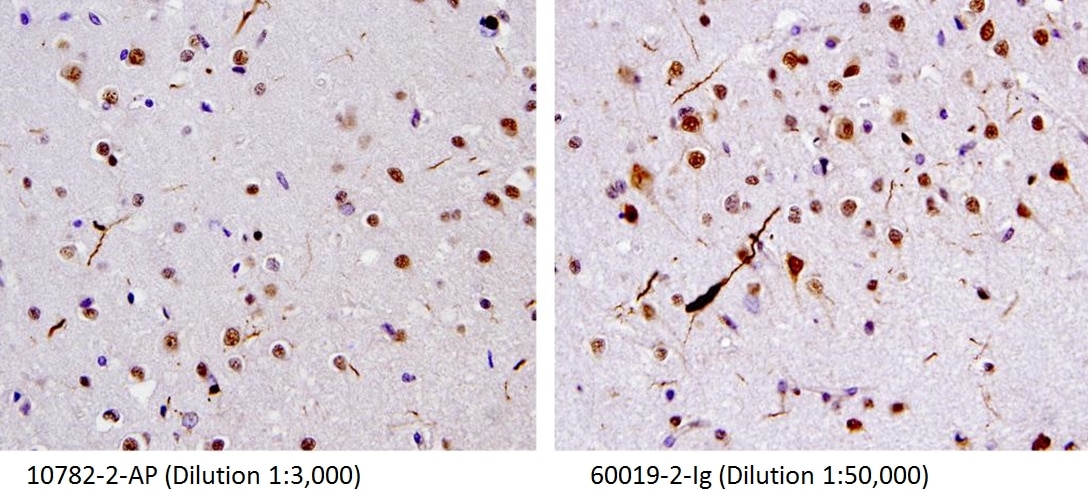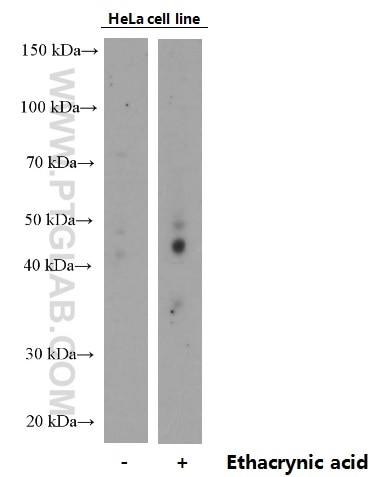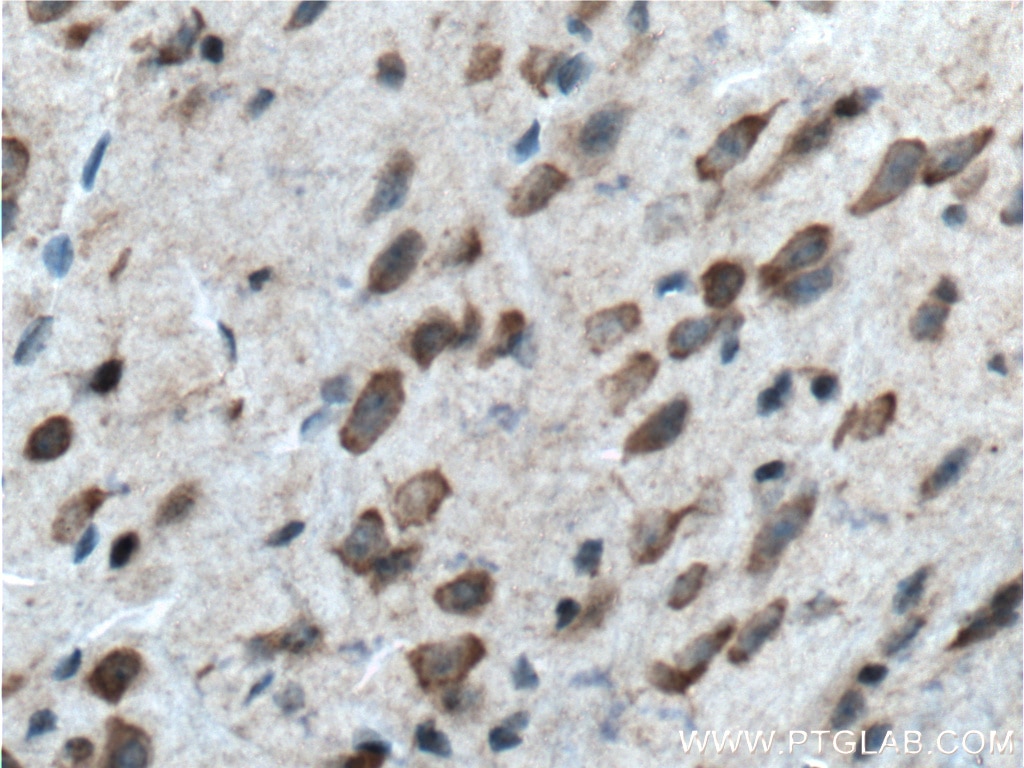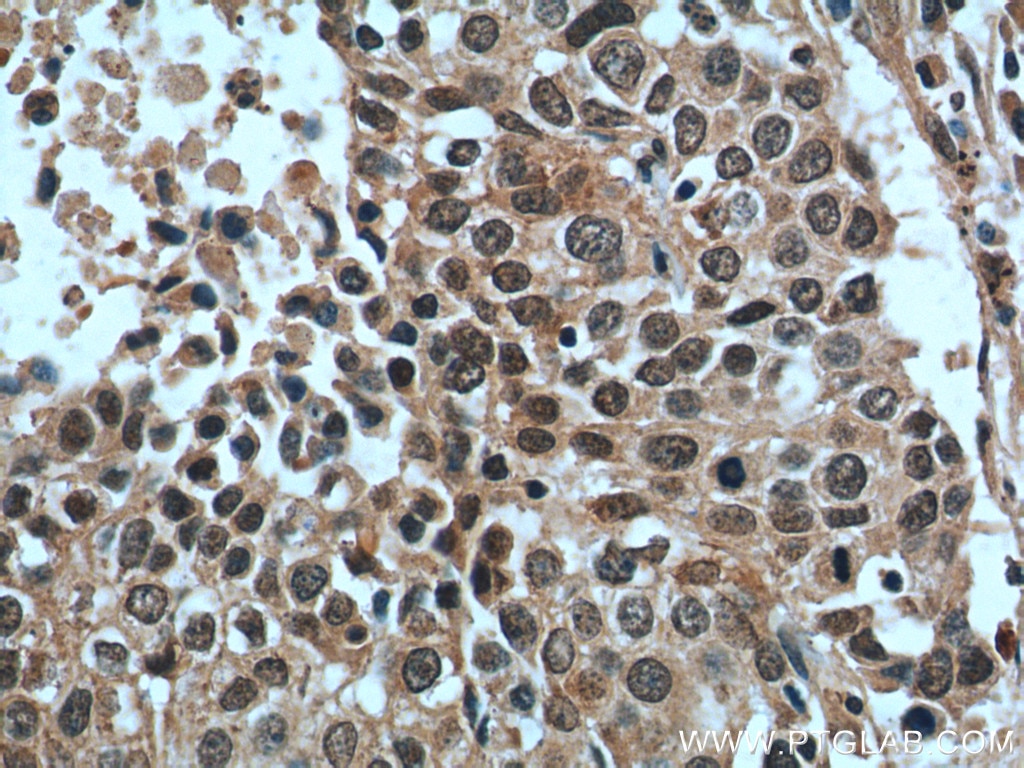Anticorps Polyclonal de lapin anti-TAU
TAU Polyclonal Antibody for WB, IF, IHC, ELISA
Hôte / Isotype
Lapin / IgG
Réactivité testée
Humain, rat, souris et plus (1)
Applications
WB, IHC, IF-Fro, ELISA
Conjugaison
Non conjugué
N° de cat : 10274-1-AP
Synonymes
Galerie de données de validation
Applications testées
| Résultats positifs en WB | tissu cérébral de souris, cerveau de rat |
| Résultats positifs en IHC | tissu cérébral humain, tissu de gliome humain il est suggéré de démasquer l'antigène avec un tampon de TE buffer pH 9.0; (*) À défaut, 'le démasquage de l'antigène peut être 'effectué avec un tampon citrate pH 6,0. |
| Résultats positifs en IF-Fro | tissu cérébral de souris, |
Dilution recommandée
| Application | Dilution |
|---|---|
| Western Blot (WB) | WB : 1:2000-1:12000 |
| Immunohistochimie (IHC) | IHC : 1:20-1:200 |
| Immunofluorescence (IF)-FRO | IF-FRO : 1:50-1:500 |
| It is recommended that this reagent should be titrated in each testing system to obtain optimal results. | |
| Sample-dependent, check data in validation data gallery | |
Applications publiées
| WB | See 30 publications below |
| IHC | See 3 publications below |
| IF | See 9 publications below |
Informations sur le produit
10274-1-AP cible TAU dans les applications de WB, IHC, IF-Fro, ELISA et montre une réactivité avec des échantillons Humain, rat, souris
| Réactivité | Humain, rat, souris |
| Réactivité citée | rat, Chèvre, Humain, souris |
| Hôte / Isotype | Lapin / IgG |
| Clonalité | Polyclonal |
| Type | Anticorps |
| Immunogène | TAU Protéine recombinante Ag0354 |
| Nom complet | microtubule-associated protein tau |
| Masse moléculaire calculée | 37-46, 79-81 kDa |
| Poids moléculaire observé | 45-70 kDa, 100 kDa |
| Numéro d’acquisition GenBank | BC000558 |
| Symbole du gène | TAU |
| Identification du gène (NCBI) | 4137 |
| Conjugaison | Non conjugué |
| Forme | Liquide |
| Méthode de purification | Purification par affinité contre l'antigène |
| Tampon de stockage | PBS avec azoture de sodium à 0,02 % et glycérol à 50 % pH 7,3 |
| Conditions de stockage | Stocker à -20°C. Stable pendant un an après l'expédition. L'aliquotage n'est pas nécessaire pour le stockage à -20oC Les 20ul contiennent 0,1% de BSA. |
Informations générales
Tau (tubulin-associated unit) is a microtubule-associated protein (also known as MAPT), expressed mainly in neurons of the central nervous system. Its primary function is to modulate microtubule dynamics for maintaining axonal cytoskeleton. Various isoforms of Tau exist due to the alternative splicing, and short isoforms around 45-69 kDa and long isoforms around 100-110 kDa have been reported in different literature (8752131,15965697). Present polyclonal anti-Tau antibody was produced by immunizing animals with N-terminal of Tau and can detect approx 45-70 kDa and 100-kDa bands in brain tissues.
Protocole
| Product Specific Protocols | |
|---|---|
| WB protocol for TAU antibody 10274-1-AP | Download protocol |
| IHC protocol for TAU antibody 10274-1-AP | Download protocol |
| IF protocol for TAU antibody 10274-1-AP | Download protocol |
| Standard Protocols | |
|---|---|
| Click here to view our Standard Protocols |
Publications
| Species | Application | Title |
|---|---|---|
Sci Adv Oligodendroglial glycolytic stress triggers inflammasome activation and neuropathology in Alzheimer's disease. | ||
Hum Mol Genet Parkin deletion causes cerebral and systemic amyloidosis in human mutated tau over-expressing mice. | ||
Acta Neuropathol Commun Laterality and region-specific tau phosphorylation correlate with PTSD-related behavioral traits in rats exposed to repetitive low-level blast. | ||
Free Radic Biol Med The neuroprotective effects of phosphocreatine on amyloid beta 25-35-induced differentiated neuronal cell death through inhibition of AKT/GSK-3β /Tau/APP/CDK5 pathways in vivo and vitro | ||
Mol Ther Nucleic Acids Implications of miR-148a-3p/p35/PTEN signaling in tau hyperphosphorylation and autoregulatory feedforward of Akt/CREB in Alzheimer's disease. |
Avis
The reviews below have been submitted by verified Proteintech customers who received an incentive forproviding their feedback.
FH manohar (Verified Customer) (03-06-2024) |
|
FH David (Verified Customer) (01-02-2024) | Produces a single band at around 45kDa which is concordant with the data sheet.
|
FH Tanusree (Verified Customer) (02-14-2019) | The antibody worked well with the mouse primary cells and tissue.
|
